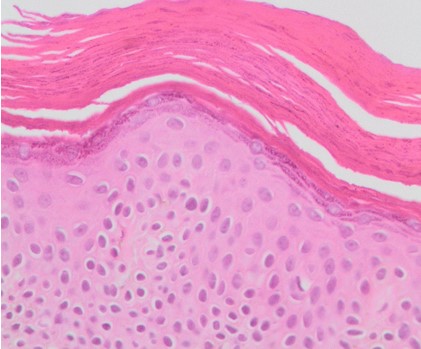Resumen
Objetivo: Establecer la prevalencia de estenosis carotidea (≥ 50%) en una población con ictus isquémico entre los años 2014 a 2018 y comparar con datos previos disponibles.
Métodos: Se realizó un estudio de tipo corte transversal. Se incluyeron pacientes mayores de 18 años con ictus isquémico agudo, quien en la evaluación etiológica se documenta una estenosis carotidea (≥ 50%), con descripción de sus principales factores de riesgo, estudios e intervenciones.
Resultados: De 413 pacientes con ictus, se encontraron 51 pacientes con estenosis >50% con prevalencia de 12,3%. La prevalencia previa de 1996-2002 fue de 16%. La edad media fue 78 años, hombres (51%). Dentro de los factores de riesgo hubo mayor proporción de hipertensión arterial (76,5%) y de dislipidemia (47%). En 15/51 se pudo revisar el acuerdo entre los métodos de imágenes diagnósticas, con un 54% de concordancia para el grado de estenosis. En 59% de los sujetos la clasificación etiológica del ACV fue debida a enfermedad de vaso grande, con pequeño porcentaje de cirugías (12%).
Conclusiones: Se encontró una prevalencia de estenosis carotidea similar a otros estudios, con una reducción en los factores de riesgo como el cigarrillo y menos marcadores de aterosclerosis y menos enfermedad coronaria.
2. Christensen MC, Valiente R, Sampaio Silva G, et al. Acute treatment costs of stroke in Brazil. Neuroepidemiology. 2009;32(2):142–9.
3. Moreno E, Rodríguez J, Bayona-Ortiz H. Trombólisis endovenosa como tratamiento del ACV isquémico agudo en Colombia: una revisión sistemática de la literatura. Acta Neurológica Colomb. 2019;35(3):156–66.
4. De Weerd M, Greving JP, De Jong AWF, et al. Prevalence of asymptomatic carotid artery stenosis according to age and sex systematic review and metaregression analysis. Stroke. 2009;40(4):1105–13.
5. Falk E. Pathogenesis of atherosclerosis. J Am Coll Cardiol. 2006;47(8):7–12.
6. Badimon L, Vilahur G. Thrombosis formation on atherosclerotic lesions and plaque rupture. J Intern Med. 2014;276(6):618–32.
7. Rothwell PM, Warlow CP. Low risk of ischemic stroke in patients with reduced internal carotid artery lumen diameter distal to severe symptomatic carotid stenosis: Cerebral protection due to low poststenotic flow? Stroke. 2000;31(3):622–30.
8. Avezum Á, Costa-Filho FF, Pieri A, et al. Stroke in Latin America: Burden of disease and opportunities for prevention. Glob Heart. 2015;10(4):323–31.
9. Barnnet HJM, Taylor DW, Haynes RB. Beneficial effect of carotid endarterectomy in symptomatic patients with high-grade carotid stenosis. N Engl J Med. 1991;325(7):445–53.
10. Brott TG, Halperin JL, Abbara S, et al. Guideline on the management of patients with extracranial carotid and vertebral artery disease: Executive summary. J Neurointerv Surg. 2011;3(2):100–30.
11. Cosottini M, Pingitore A, Puglioli M, et al. Contrast-enhanced three-dimensional magnetic resonance angiography of atherosclerotic internal carotid stenosis as the noninvasive imaging modality in revascularization decision making. Stroke. 2003;34(3):660–4.
12. Wabnitz AM, Turan TN. Symptomatic carotid artery stenosis: Surgery, stenting, or medical therapy? Curr Treat Options Cardiovasc Med. 2017;19(8):1–12.
13. Amarenco P, Bogousslavsky J, Caplan LR, et al. The ASCOD phenotyping of ischemic stroke (updated ASCO phenotyping). Cerebrovasc Dis. 2013;36(1):1–5.
14. Sacco RL, Kargman DE, Gu Q, et al. Race-ethnicity and determinants of intracranial atherosclerotic cerebral infarction. Stroke. 1995. p. 14–20.
15. Strömberg S, Nordanstig A, Bentzel T, et al. Risk of early recurrent stroke in symptomatic carotid stenosis. Eur J Vasc Endovasc Surg. 2015;49(2):137–44.
16. Flaherty ML, Kissela B, Khoury JC, et al. Carotid artery stenosis as a cause of stroke. Neuroepidemiology. 2012;40(1):36–41.
17. Abbott AL, Bladin CF, Levi CR, et al. What should we do with asymptomatic carotid stenosis? Int J Stroke. 2007;2(1):27–39.
18. Spence JD. Asymptomatic carotid stenosis: Why a moratorium is needed on intervention outside clinical trials. Neurology. 2017;88(21):1990–1.
19. Varón X, Bayona H. Prevalencia de enfermedad carotídea y relación con factores de riesgo en pacientes con ataque cerebrovascular. Universidad el Bosque, Posgrados; 2002.
20. Nederkoorn PJ, Elgersma OEH, Mali WPTM, et al. Overestimation of carotid artery stenosis with magnetic resonance angiography compared with digital subtraction angiography. J Vasc Surg. 2002;36(4):806–13.
21. Lovrencic-Huzjan A, Rundek T, Katsnelson M. Recommendations for management of patients with carotid stenosis. Stroke Res Treat. 2012;2012:1–12.
22. Ong C-T, Wong Y-S, Sung S-F, et al. Progression of mild to moderate stenosis in the internal carotid arteries of patients with ischemic stroke. Front Neurol. 2018;9:1–7.
23. Joh JH. The prevalence and risk factors for atherosclerotic carotid stenosis and carotid plaque: A community-based screening study. J Vasc Surg. 2015;61(6):91S-92S.
24. Woo SY, Joh JH, Han SA, et al. Prevalence and risk factors for atherosclerotic carotid stenosis and plaque a population-based screening study. Medicine (Baltimore). 2017;96(4):2–7.
25. Barnett H, Guton RW, Eliasziw M, et al. Causes and severity of ischemic stroke in patients with symptomatic intracranial arterial stenosis. Stroke. 2009;40(6):1999–2003.
26. Enry H, Arnett JMB, Ayne DW, et al. Benefit of carotid endarterectomy in patients with symptomatic moderate or severe stenosis. N Engl J Med. 1998;339(20):1415–25.
27. Turunen MP, Hiltunen MO, Ylä-Herttuala S. Gene therapy for angiogenesis, restenosis and related diseases. Exp Gerontol. 1999;34(4):567–74.
28. Amarenco P, Kim JS, Labreuche J, et al. A comparison of two LDL cholesterol targets after ischemic stroke. N Engl J Med. 2020;382(1):9–19.
29. Markus HS, Droste DW, Kaps M, et al. Dual antiplatelet therapy with clopidogrel and aspirin in symptomatic carotid stenosis evaluated using doppler embolic signal detection: The clopidogrel and aspirin for reduction of emboli in symptomatic carotid stenosis (CARESS) trial. Circulation. 2005;111(17):2233–40.

Esta obra está bajo una licencia internacional Creative Commons Atribución 4.0.
Derechos de autor 2021 Julieth Milena Rodríguez López, Hernán Francisco Bayona Ortiz, Carlos Fernando Martinez



